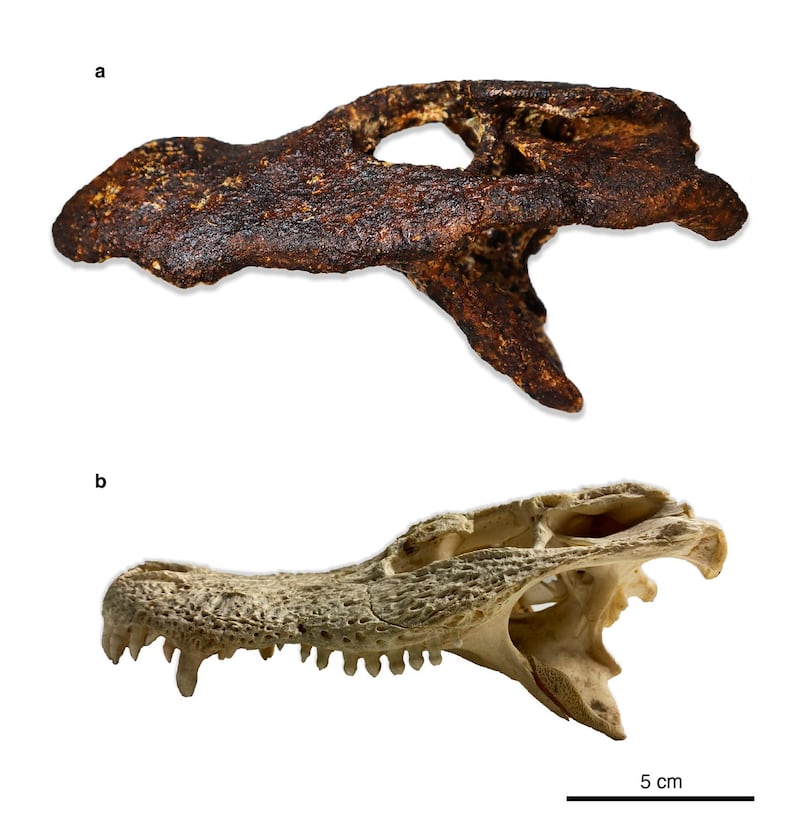Scientists have discovered a previously unknown alligator species with a distinct skull structure that thrived in ancient Thailand about 230,000 years ago, offering additional insights into the evolutionary history of Asian alligators, according to a new study.
The creature in question shares a close evolutionary relationship with the Chinese alligator, said the research published on Thursday in Nature's Scientific Reports journal.
The identification of this recently unearthed species was made possible by meticulously examining an almost complete fossilized skull, estimated to be younger than 230,000 years old.
The prehistoric species was found in the Ban Si Liam area of the Non Sung district of Nakhon Ratchasima Province, which is about 300 kilometers (186 miles) northeast of Bangkok. The chosen name for this species, Alligator munensis, pays homage to the nearby Mun River.
It displayed distinctive skull characteristics, such as a wide and short snout, a high skull structure, a reduced count of tooth sockets, and nostrils positioned far from the snout's tip.
The alligator is a large, semi-aquatic reptile in the Crocodilia order. It is mostly found in freshwater habitats, unlike crocodiles, which are found in fresh and saltwater habitats.
There are two living alligator species: the American Alligator (Alligator mississippiensis) and the Chinese Alligator (Alligator sinensis), also known as Yangtze alligators, found in a small area in northeastern China.
The researchers analyzed the remains of the fossil. They conducted a thorough comparison with 19 specimens belonging to four extinct alligator species and the living alligators to understand the evolutionary connections between the creature and other species, the researchers said in a statement.
According to the study, the skull of Alligator munensis displays similar features to the Chinese alligator, including a small opening in the roof of the mouth, a ridge on the skull's top and an elevated ridge behind the nostrils.

Scientists believe that these two species share a close relationship and may have originated from a common ancestor inhabiting the lowlands of the Yangtze-Xi and Mekong-Chao Phraya river systems.
The rise in elevation of the southeastern Tibetan Plateau around 23 to 5 million years ago caused a separation between their shared ancestors, leading to the development of distinct species, the researchers speculate.
The researchers also noted the presence of large tooth sockets at the back of the ancient alligator's mouth, indicating the potential for possessing robust teeth capable of crushing shells.
They said that its diet likely included hard-shelled prey, such as snails, alongside other animals.
Edited by Mike Firn.
